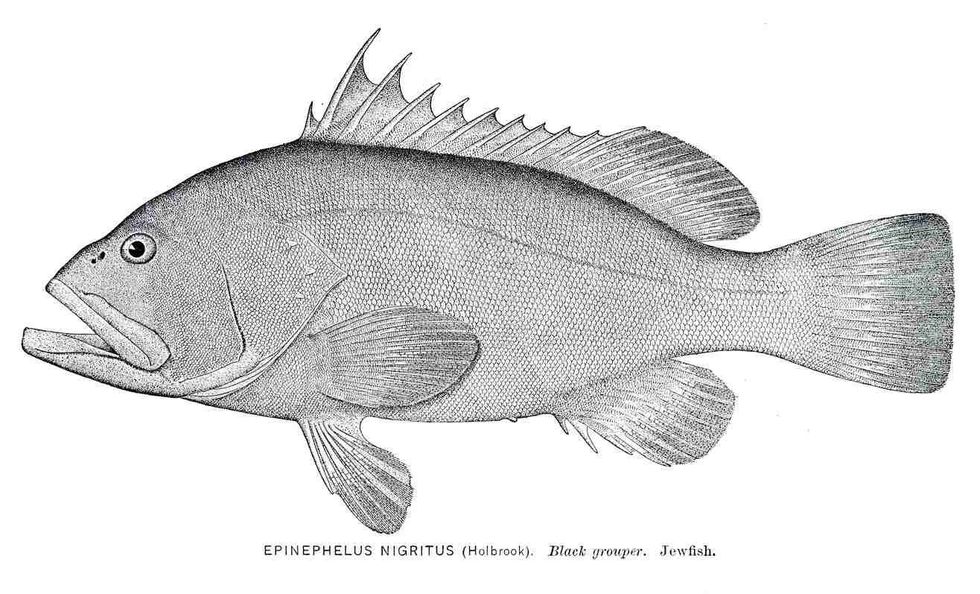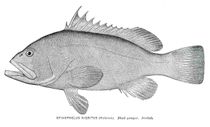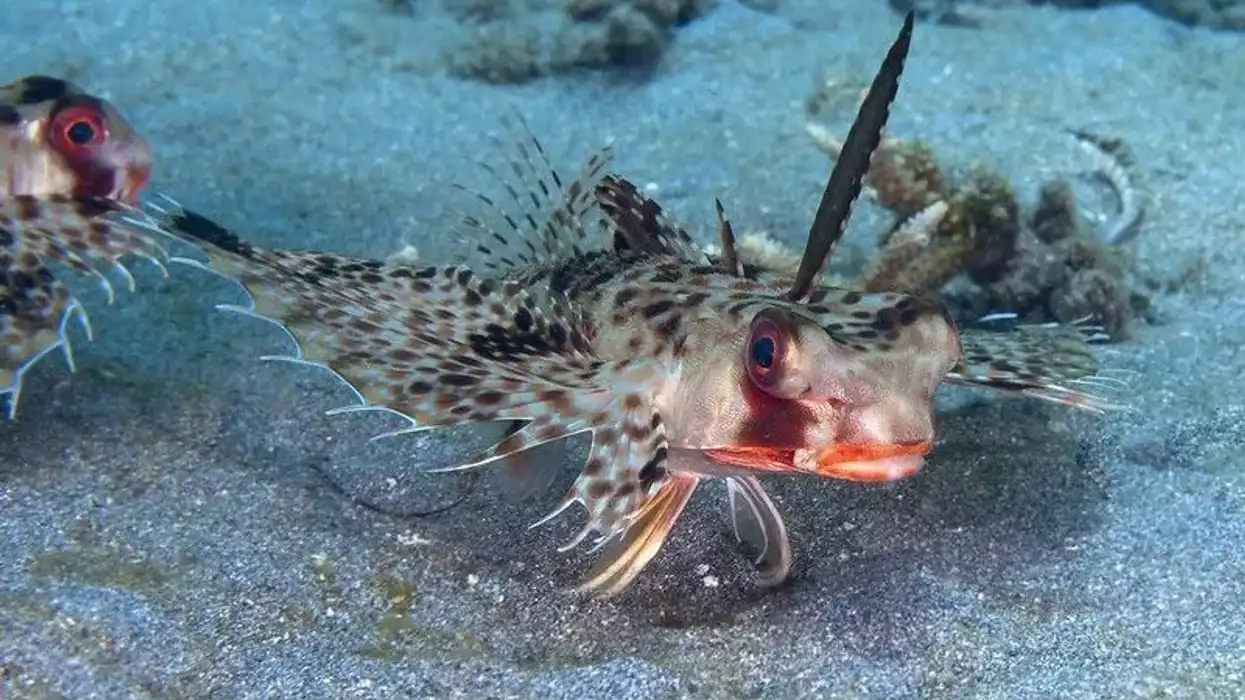The black grouper (Mycteroperca bonaci) is usually found in the Western and South Atlantic regions, South America, Florida, and the Gulf Of Mexico. It is a species of fish that is known for its exquisite taste and flavor.
It is caught by a fishery or a fisherman for its taste. It has dorsal, anal, and caudal fins that are bluish. This species is quite rare, which is why it comes under the status of Near Threatened.
These fish feed on smaller reef fish like herrings, grunts, and snappers. They also feed on crustaceans.
Here, you will find many amazing and interesting facts about black groupers that you will enjoy. Let's take a look at these facts and information, and if you enjoy these then, do read our Manta Ray Facts and Teira Batfish Facts
Black Grouper Interesting Facts
What type of animal is a black grouper?
Black groupers (Mycteroperca bonaci) are a type of fish.
What class of animal does a black grouper belong to?
This grouper belongs to the class Actinopterygii. It's a species of fish.
How many black groupers are there in the world?
The total population of black groupers is unknown. These species are Near Threatened though, so there aren't many of them alive in the world.
Where does a black grouper live?
This grouper lives in a habitat that has coral reefs or rocky bottoms. They are spread throughout a wide range. They are found in the South Atlantic Ocean, Caribbean Sea, Florida Keys, Gulf of Mexico, and the South Atlantic.
What is a black grouper's habitat?
The Florida black grouper lives in a habitat containing coral reefs or at rocky bottoms in the sea. Black groupers can reach up to 300 ft (91.4 m) in depth.
Who do black groupers live with?
Black groupers are solitary fish. They live alone except during May to August, which is their spawning season. During these months, they gather and spawn in huge numbers.
How long does a black grouper live?
Black groupers have a long lifespan. They live for around 30 years in the wild though usually they are caught before reaching that age.
How do they reproduce?
Black groupers are protogynous hermaphrodites. This means that all fish born in this species are females. They can, however, change their sex from female to male later in life.
During the spawning season, these fish change back to being females to lay eggs. Usually, when they grow about 39-47.8 in (99-121.5 cm), they change into females. They lay around 500,000-600,000 eggs in their spawning season.
What is their conservation status?
The black grouper fish has the conservation status of Near Threatened according to the IUCN. This species of fish have a limited population and are threatened by various factors such as being hunted down by predators like great barracudas or sandbar sharks.
They also face the threat of being overfished by fisheries. These fisheries cut down the lifespan of these fish, which would otherwise be around 30 years.
Black Grouper Fun Facts
What do black groupers look like?

The black grouper has a protruding lower jaw along with an oblong body. It has a squared-off caudal fin and rounded margins on both the anal fin as well as the dorsal fin.
It has an olive or gray body and small hexagonal brassy spots on its head. It also has rectangular blotches on its body. It has 11 spines and 15-17 rays on the dorsal fin.
The dorsal, anal, and caudal fins have soft bluish or black borders, and they might have an orange edge on their pectoral fins. They have strong and excellent front teeth.
These slender teeth are used as raspers, and it uses these teeth to prevent small fish from escaping instead of using them to tear flesh. They look spooky to humans because of their rectangular blotches and hexagonal brassy spots.
How cute are they?
The black grouper is not a cute fish. It may have textures on its body that might look attractive, but the truth is these fish are not cute but are rather a bit unpleasant.
Fisheries located in the Gulf of Mexico and South Atlantic catch these fish for commercial purposes and consumption because of the famous mild and unique taste of the black grouper.
How do they communicate?
The communication method of a black grouper is still unknown as this is a rare fish to find.
How big is a black grouper?
The black grouper size limit is about 28-59 in (70-150 cm) in size. It is a medium-sized fish that preys on small reef fish or shrimps. Though they are almost the same size as a great barracuda, they still get eaten by them.
How fast can a black grouper swim?
It cannot swim fast. Their girth does not allow them to become fast swimmers.
How much does a black grouper weigh?
A black grouper weighs around 125-179 lb (56.6-81.1 kg). This fish is quite heavy and big, because of which many people catch them while fishing. A fishery catching them for commercial purposes is a very common event.
What are the male and female names of the species?
They are protogynous hermaphrodites, so they are born as females, but some change into males later in life. The males and females do not have separate names.
What would you call a baby black grouper?
A baby black grouper does not have any specific name. A juvenile black grouper usually feeds on shrimp or other smaller crustaceans.
What do they eat?
A black grouper feeds on crustaceans and small reef fish like snappers or herrings. It uses its slender teeth to prevent these small fish from escaping. It is known as an ambush predator and uses the element of surprise to catch its prey.
Are they aggressive?
It is an aggressive species of fish. It surprises its prey to catch it and is often seen in other fishes' spawning grounds to eat it. Fishers prefer to catch them because of their sporty and aggressive behavior. Due to their size, they are strong and challenge fishers who try to catch them.
Would they make a good pet?
This grouper is an aggressive fish that attacks and eats fish that are smaller than it. If you want to keep one as a pet, you should get a separate tank for it because if you keep it with other fish, the chances are that it will eat them.
Did you know...
The black grouper is also known as a marbled rockfish. A black grouper tastes good and mild. Grouper fisheries located in the Gulf of Mexico and the South Atlantic usually catch them for their exquisite taste.
The black grouper is often mistaken as a gag grouper (Mycteroperca microlepis), but they have different features. Let's do a Gag grouper vs. black grouper comparison:
- The black grouper has a square-shaped caudal fin, while the gag grouper has a mildly concave shape along the posterior edge of the caudal fin.
- The gag grouper has an angular preopercle bone, whereas the black grouper has a square-shaped one.
The basic difference between black grouper vs. red grouper is that red groupers are sweeter and milder in taste than black groupers.
Red groupers usually live at a depth of 19-108 ft (6-33 m), but black groupers can reach up to 300 ft (91 m) depth during the summers.
Black grouper price ranges from $29 to $40. A giant black grouper can be sold for a much higher price. They are so expensive because of their exquisite taste and because of how rare they are to find.
Goliath groupers are dangerous to human beings. There are various instances when these fish have eaten human children.
While black groupers live in a habitat rich in coral reefs and are usually found in South America, Florida, and the Gulf of Mexico, their cousin species, the black-spotted grouper, is found in Australia and New Zealand.
You can catch them by using live bait like pinfish or threadfin. They love live bait and will usually fall for it. You can cook it quite easily too. The black grouper season starts in Florida on May 1.
The most basic recipe to cook takes about 10-15 minutes only. It would be best to sprinkle a mix of basil, red pepper, dry fennel seeds, parsley, and garlic.
Feel free to drizzle some olive oil, squeeze a bit of fresh lemon juice over the fresh fish, and voila, you've got yourself a yummy grilled fish with lemon and herbs!
What happens to black groupers as they grow older?
These groupers are born as a female. Some of the females choose to change into males for reproduction purposes. As black groupers grow older, they transform into females to reproduce eggs during the spawning period. They might transform when they grow to about 11-14 years old.
How strong are black groupers?
This grouper has a strong lower jaw. This species of fish are predators that attack their prey by surprise and swallow them.
They have strong slender teeth, but they use them to keep their prey trapped instead of tearing their flesh or chewing them. They are aggressive too. They give a bit of a challenge to fishers when they try to catch them.
Here at Kidadl, we have carefully created lots of interesting family-friendly animal facts for everyone to discover! Learn more about some other fish, including Hatchetfish Facts or Vampire Fish Facts.
You can even occupy yourself at home by coloring in one of our free printable Black Grouper coloring pages.










